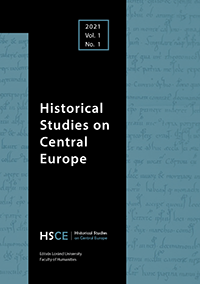Károly Pál Pálffy and the Dear “Familia”: Pálffy Family Disputes in the Mid-Eighteenth Century Based on the Family Documents
Published 30-04-2021
Keywords
- eighteenth century,
- Hungarian aristocracy,
- family history,
- property suits,
- family feuds
- family relations ...More
How to Cite
Copyright (c) 2021 Anna Fundárková

This work is licensed under a Creative Commons Attribution-NonCommercial 4.0 International License.
Abstract
The Pálffys were among the wealthiest and most influential families in the Kingdom of Hungary and the Habsburg Monarchy. The family owed its arrival in the political, economic, and social elite to Miklós Pálffy (1552–1600), the “hero of Győr.” His descendants obtained the highest offices in Hungary—Pál Pálffy (1592–1653) became chief justice and palatine—and filled important positions in the Imperial Court in Vienna (Pál Pálffy became a member of the Privy Council). In the first half of the eighteenth century, the Pálffys excelled primarily in military service; however, multiple wars led to the near extinction of the male branch of the family as numerous young Pálffy men lost their lives on the battlefield. Despite these serious losses, the family managed to preserve its prominent position in the Kingdom of Hungary and the Viennese court: Palatines Miklós Pálffy and János Pálffy belonged to the innermost circle of advisers to Charles III and Maria Theresa. Maintaining appearances in court, however, was enormously costly for the Pálffy family. Moreover, in the sixteenth and seventeenth centuries, the family procured their largest estates; in the eighteenth century, rather than acquiring estates, the family faced a mounting burden of debt. János Pálffy attempted to solve the problem in his will by changing the legal status of the central estate, the castle of Červený Kameň (Vöröskő, Rotenstein), to an entail (mostly referred to as Fideicommissum in European legal terminology). The result was decades of strife amongst his descendants, who did not find the entailment of Červený Kameň personally advantageous since the property could not be divided or alienated. The Pálffy family lawsuits were not unique in the eighteenth century; during the same period, the Zichys were also embroiled in family litigation. This study examines the longstanding feud that began in 1749 through the lens of family letters, providing a perspective on family history and contemporary attitudes. This study is part of wider research on the history of lawsuits and makes it possible to place the eighteenth-century legal disputes of the Hungarian nobility in a broader Central European and even European context.


